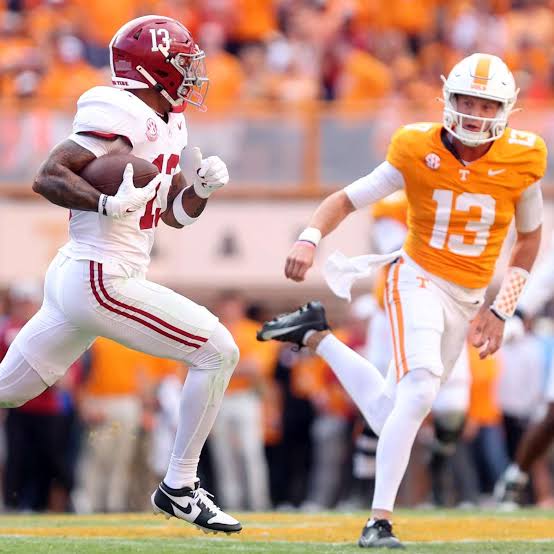Every fall, as leaves turn orange and crimson across the South, a single date unites and divides fans in equal measure — the Third Saturday in October. It’s not just a football game; it’s a century-old ritual steeped in pride, history, and Southern passion. When the Alabama Crimson Tide and the Tennessee Volunteers meet, the stakes transcend standings and statistics — they touch the very soul of college football.
The rivalry began in 1901, when Alabama and Tennessee battled to a 6–6 draw in Birmingham. From that humble start grew one of the most fiercely contested matchups in the sport’s history. By the mid-20th century, the game had settled permanently on the calendar’s third Saturday in October, giving rise to the now-iconic name. For generations, fans have treated that weekend as sacred — a day when pride, bragging rights, and tradition take center stage.
Through the decades, the rivalry has mirrored the evolution of Southern football itself. Under Bear Bryant, Alabama became a national powerhouse, turning the matchup into a benchmark for dominance. The Vols, led by coaches like Robert Neyland, Johnny Majors, and Phillip Fulmer, rose to meet that challenge with memorable triumphs that echoed through the hills of Tennessee. The game was often decisive in shaping the SEC title race, and for fans, victory on this day could redeem an entire season.
One of the most enduring traditions tied to the rivalry is the postgame cigar celebration. The ritual began in the 1960s when Alabama’s players lit cigars after defeating Tennessee — a small act of defiance that grew into legend. Today, both teams uphold the tradition, knowing that the sweet smoke of victory carries more meaning than any trophy. While technically against NCAA rules, the celebration persists as a beloved symbol of respect and rivalry.
The modern era has seen the pendulum swing sharply. Alabama dominated through the 2000s and 2010s under Nick Saban, capturing 15 straight victories from 2007 to 2021. Yet in 2022, the rivalry was reborn in spectacular fashion. Tennessee ended the drought with a stunning 52–49 win in Knoxville, sealed by a last-second field goal. Neyland Stadium erupted — goalposts came down, fans stormed the field, and the smoke of cigars filled the night sky.
More than a football game, the Third Saturday in October is a celebration of identity, loyalty, and legacy. It’s the clash of two traditions, two colors, and two fan bases who live and breathe their teams. In a sport that constantly changes, this rivalry remains timeless — a reminder that in college football, history still matters, and passion never fades.
